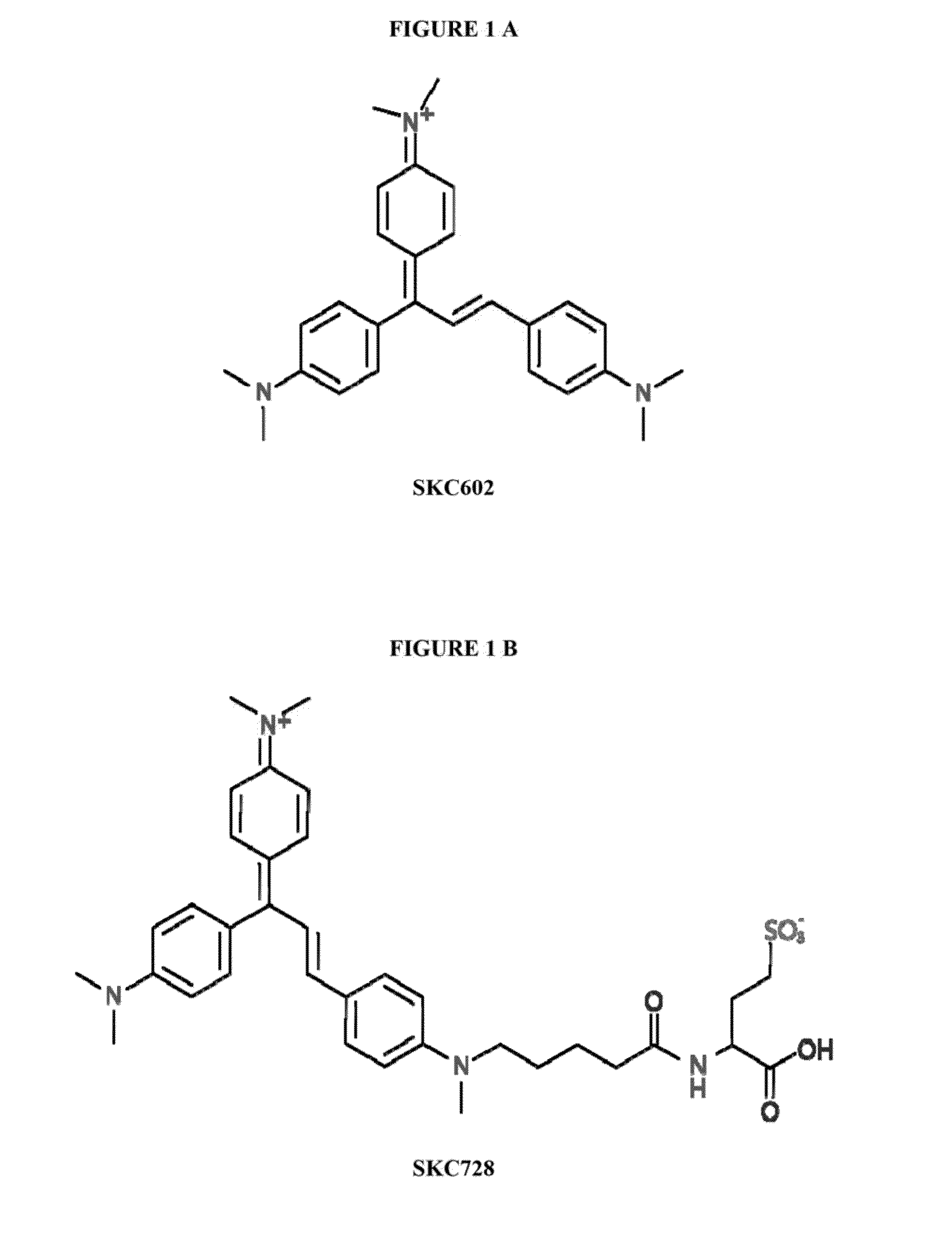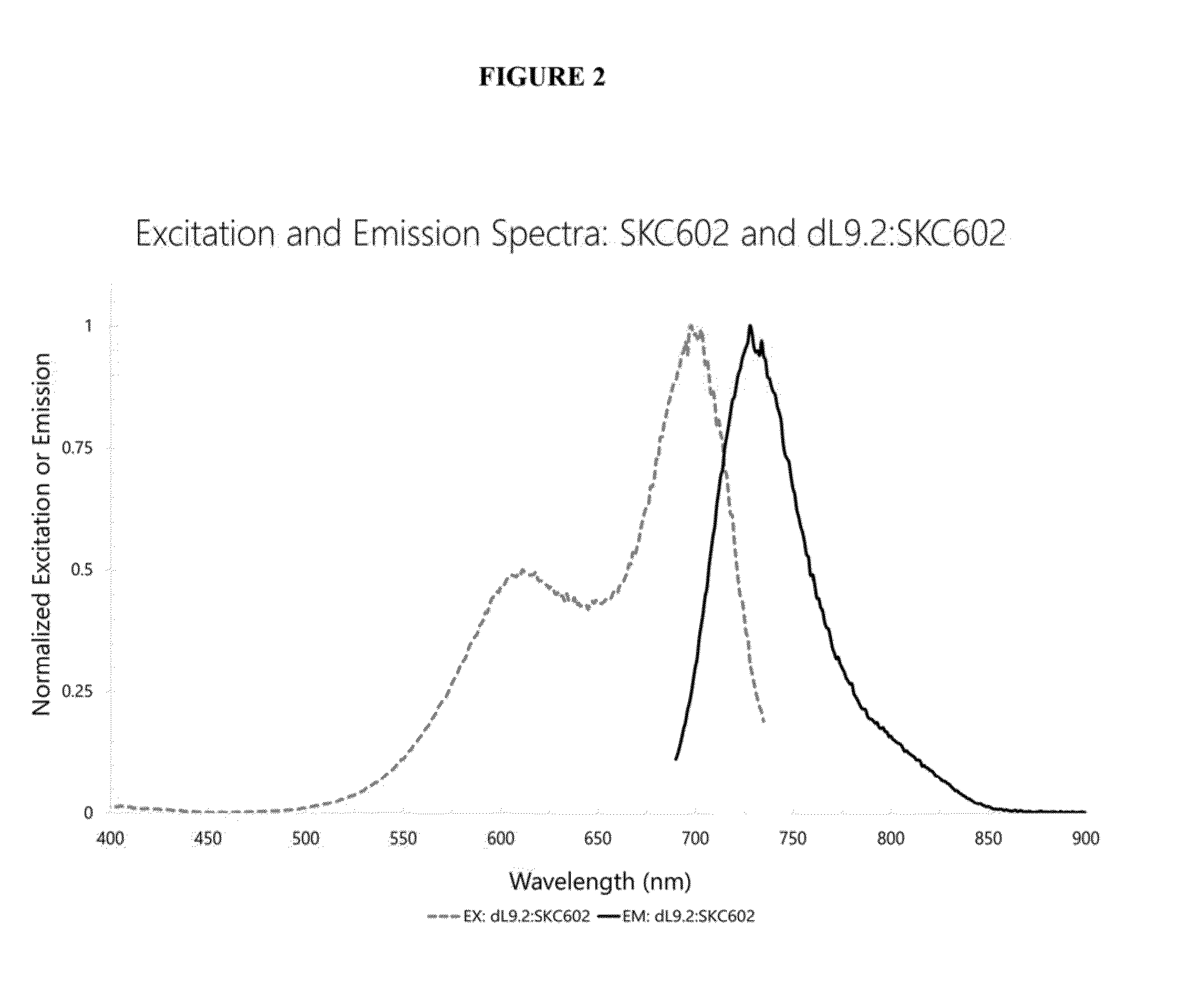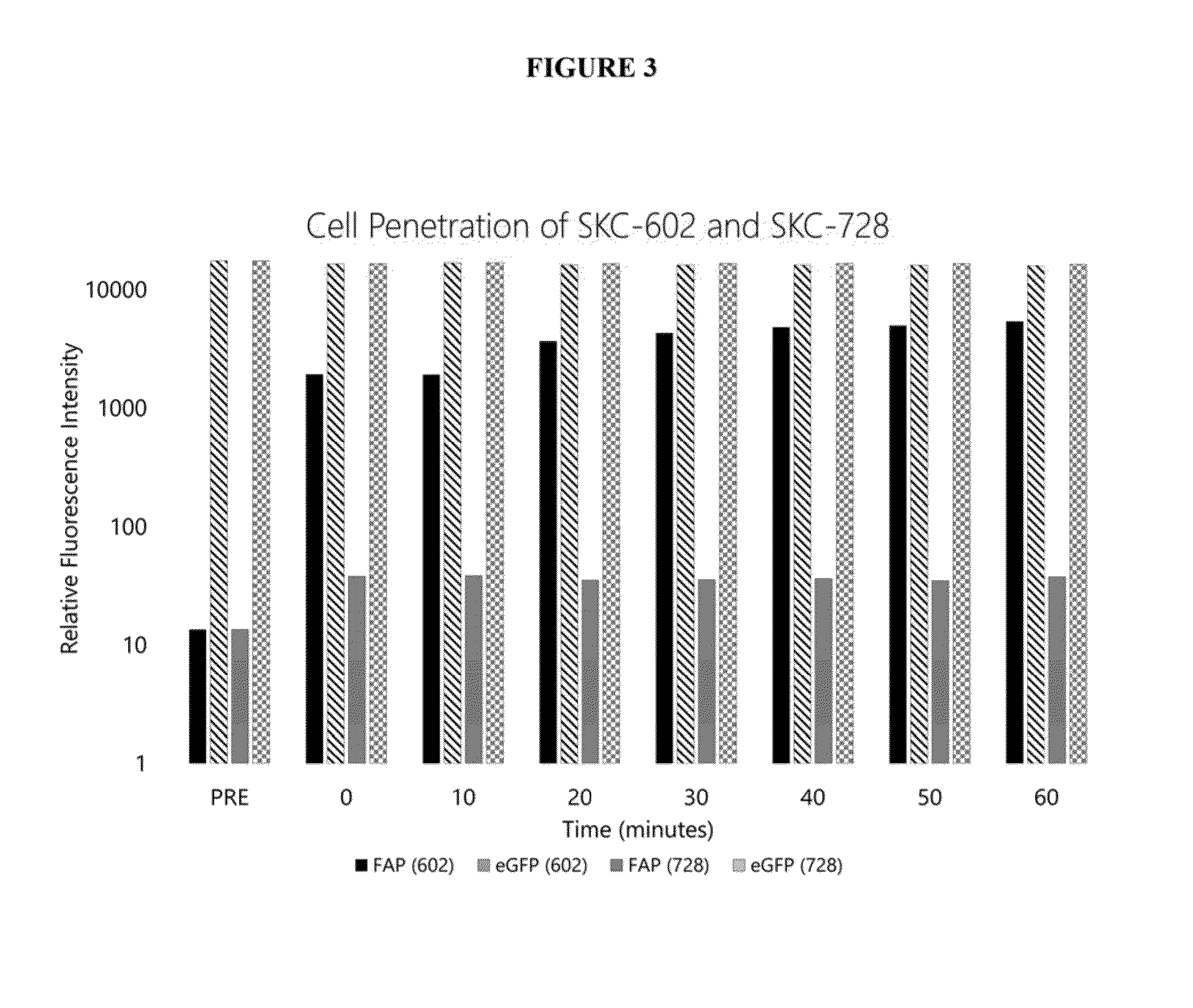Near infrared fluorogen and fluorescent activating proteins for in vivo imaging and live-cell biosensing
a technology of in vivo imaging and live cells, applied in the field of fluorogens and biosensors, can solve the problems of partially restricting the application of fap technology, and achieve the effects of reducing the excitation and detection of traditional fluorescent probes
- Summary
- Abstract
- Description
- Claims
- Application Information
AI Technical Summary
Benefits of technology
Problems solved by technology
Method used
Image
Examples
example 1
Synthesis of [(E)-N-(4-(1,3-bis(4-(dimethylamino)phenyl) allylidene)cyclohexa-2,5-dien-1-ylidene)-N-methylmethanaminium] (SKC602)
[0054]
[0055]4-Dimethyl amino benzaldehyde (149 mg, 1 mmol) and 4,4′-vinylidene bis (N,N-dimethylaniline) (300 mg, 1.12 mmol) were dissolved in 5 ml acetic anhydride. 200 μl of 60% perchloric acid was added slowly. The mixture was refluxed for 3 hour under stirring and cooled to room temperature. The mixture was precipitated by diethyl ether, and the blue residue was purified by silica gel column chromatography using 10% methanol in chloroform to give a 242 mg deep blue solid (55% yields) as the product. MW C27H32N3+ 398.56 g / mol (61% yields).
[0056]1H-NMR (CD3OD): δ 7.72-7.85 (m, 2H); 7.53 (d, 2H); 7.45 (d, 1H); 7.12 (d, 1H); 6.52-6.98 (m, 8H); 3.24 (d, 12H); 2.9 (m, 6H). ESI-MS (+): 398.3.
example 2
Synthesis of SKC638
[0057]
[0058]4-(dimethylamino)cinnamaldehyde (355 mg, 2 mmol) and 4,4′-vinylidene bis (N,N-dimethylaniline) (585.37 mg, 2.2 mmol) were dissolved in 10 ml acetic anhydride and 300 μl of HClO4 was added. The mixture was refluxed for 3 hour under stirring and cooled to room temperature. The mixture was precipitated by diethyl ether, and the residue was purified by silica gel column chromatography using 5% methanol in chloroform to give a 202 mg solid (24% yields) as the product. MW: C29H34N3+ 424.27 g / mol; ESI-MS (+): 424.67.
example 3
Synthesis of [Ethyl 5-(methyl(phenyl)amino)pentanoate] (SKC659)
[0059]
[0060]5.52 ml (48 mmol) of N-Methyl aniline, 8 ml Bromovalerate (50.2 mmol) and 2,6-lutidine (5.82 ml, 50.2 mmol) were taken in 100 ml acetonitrile and the reaction was refluxed for 24 hour under stirring. Acetonitrile was removed under vacuum and residues were dissolved in ether. The organic phase was washed with water. After drying over magnesium sulfate and filtering, the solvent was removed to give a brown liquid. The residue was purified by flash chromatography on silica gel using a 10% ethyl acetate in hexane as eluent gave 10.1 g light yellow oil as product. MW C14H21NO2 235.32 g / mol (yields 90%).
[0061]1H-NMR (CDCl3): δ 7.25 (m, 2H); 6.72 (m, 3H); 4.15 (m, 2H); 3.35 (m, 2H); 2.94 (s, 3H); 2.35 (m, 2H); 1.67 (m, 4H); 1.27 (m, 3H). ESI-MS (+): 235.62
PUM
| Property | Measurement | Unit |
|---|---|---|
| wavelengths | aaaaa | aaaaa |
| wavelengths | aaaaa | aaaaa |
| temperature | aaaaa | aaaaa |
Abstract
Description
Claims
Application Information
 Login to View More
Login to View More - R&D
- Intellectual Property
- Life Sciences
- Materials
- Tech Scout
- Unparalleled Data Quality
- Higher Quality Content
- 60% Fewer Hallucinations
Browse by: Latest US Patents, China's latest patents, Technical Efficacy Thesaurus, Application Domain, Technology Topic, Popular Technical Reports.
© 2025 PatSnap. All rights reserved.Legal|Privacy policy|Modern Slavery Act Transparency Statement|Sitemap|About US| Contact US: help@patsnap.com



